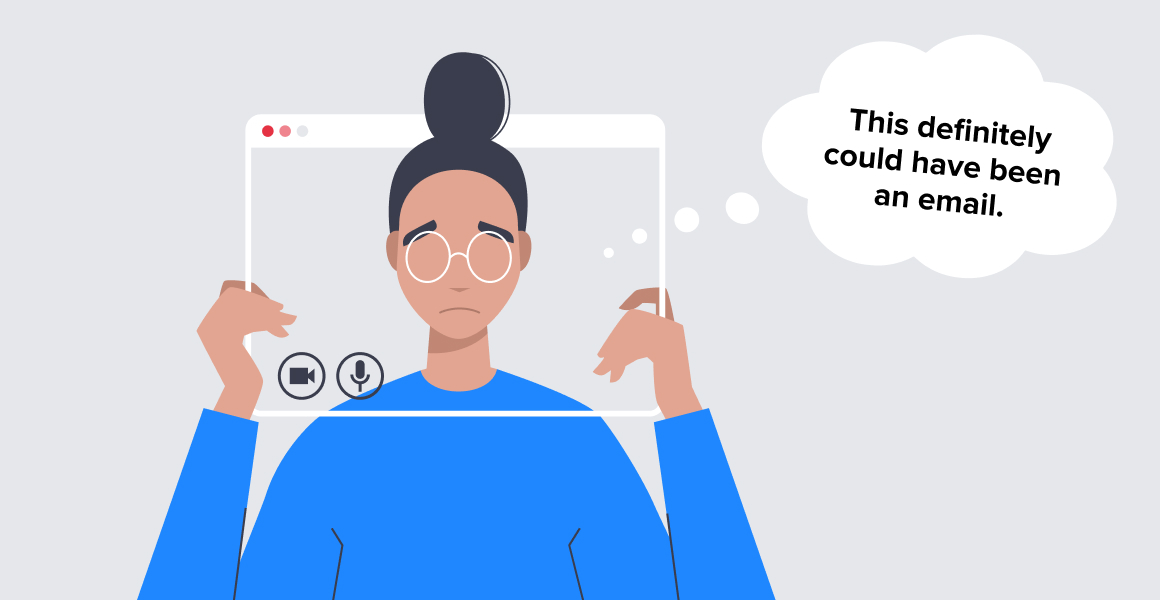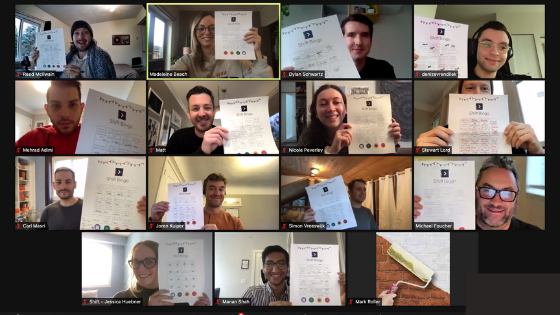With the rapidly evolving world of work and the shift to remote work, many people are making significant changes to their lifestyles to improve their quality of life. What that means to each individual is a unique circumstance, for some, the flexibility of remote work means saving time with no commute, for others, it is the ability to pick their little’s ones up from school each day, or being able to live a more nomadic lifestyle. Whatever your reason is, each is just as important as the next. What is not unique are the struggles of both starting a new position and onboarding a new employee while in a remote setting.
As the world begins to reopen its doors and transition into a post-pandemic world there have been endless discussions about what the future of work will look like. Across every demographic, we are seeing a shift, unlike anything we’ve seen before. According to the poll by Morning Consult on behalf of Bloomberg News, 39% of Americans said they would consider quitting if their employers weren’t flexible about remote work. Among millennials and Gen Z, that figure was 49%!
So, what does that mean for the employee and the employer going forward? It means adapting to a hybrid work setting, being prepared to start a career remotely, and alternatively hiring and engaging with a team remotely.
This blog will cover starting a new job remotely from both the employer and employee’s perspective.
Technology like Zoom, Slack, and Microsoft Teams allow for remote work to get done effectively however, they don’t allow for the same team bonding and engagement that an office offers.
Working to engage with staff is harder than ever with the hybrid of remote and in person work. However, it is important for employees to feel a part of the company they work for. According to 6Q, happiness is one of the top determinants of productivity in people as it tends to lead to higher engagement at work. Happy employees are typically the ones who care most about the company and are driven to make it achieve its goals. They pay more attention to the needs of customers and they are more alert of the company’s processes and systems. All these factors come together to bring organizations increased productivity and profitability.
Introverts vs extroverts
An introvert gains energy through solitude while extroverts gain energy by spending time with others. Introversion and extroversion live on two opposite ends of the spectrum, but you can fall anywhere on this spectrum, not necessarily at one end or the other. It is rare to be 100% an introvert or 100% an extrovert most people tend to find themselves mid-way between on the spectrum. Meaning sometimes we need solitude and other times we need to be engaging with others to feel fulfilled and happy.
Some people find it easier to naturally make friends and work and others need an extra push of their team.
Related Article: An Extroverts Guide To Working From Home

Remote work is great for the more introverted side but has eliminated a lot of what extroverts need from their workplace.
Related Article: An Introverts Guide To Working From Home

It is important for companies to adapt to the new normal and start trying to engage their employees virtually. But, before we dive into how as an employee and employer you can engage with your team more let’s discuss Zoom Fatigue.
Zoom Fatigue
It can be pretty hard to engage with employees remotely while balancing Zoom fatigue. According to Harvard Business Review “Zoom fatigue” stems from how we process information over video. On a video call the only way to show your employer and colleagues that you are engaged and listening is to look directly at the camera, nod, and use other visual ques that you are engaging with what they are saying. In real life when someone is talking in a meeting you wouldn’t stare right at their face nodding the whole time. In-person, we are able to use our peripheral vision to glance out the window or look at others in the room. On a video call, because we are all sitting in different homes, if we turn to look out the window, we worry it might seem like we’re not paying attention. Not to mention, most of us are also staring at a small window of ourselves, making us hyper-aware of every wrinkle, expression, and how it might be interpreted. Without the visual breaks, we need to refocus, our brains grow fatigued.
Related Article: How to Curb Meeting Fatigue and Hit Refresh

So, as an employer how can you provide more communication and engagement without increasing stress and exhaustion in employees?
Through trial and error here are two suggestions that have worked for us to promote team building in a remote setting:
Coffee Chat Program

Redrick is the parent company to five other tech companies: Shift, Assembly, Rebase, Delivra and Leadpages making getting to know everyone in the office even more difficult.
We created a channel in Slack employees could join for the Coffee Chat Program. If you choose to join the channel, on the first of each month you will be paired with someone else in the channel in the office. The pair then sets the pace for the ‘coffee chat’. It is super casual and open-ended around when to meet and for how long. We suggest 15-20 minutes but the beauty of this program is it is open-ended for what works best for each pairing. The pair can meet in person, over Zoom, Facetime or whatever they would prefer.
This has been a great success here at Redbrick since having virtual happy hours can be hard when a lot of people are trying to talk, or you don’t want to spend another hour on a Zoom call after work. This allows the meet to be as short or as long as the pair wishes, it is once a month, and it doesn’t have to be remote. This program is a great way for employees to meet different people throughout the company, in departments and teams they may not commonly work with.
Employee Bingo

Its as simple as it sounds. Ask each employee to send in one fun fact that they are willing to share with the team about themselves. Create a bingo sheet ( there are lots of free templates on Canva). Simply, input the facts in and randomize them in multiple different versions to ensure a true bingo game! We opted to play this during a meeting, to not have the staff on Zoom any extra. Each staff member went around and updated the team on what they are working on like usual and then the floor was open to how employees wanted to, or not ( trickiness is encouraged) share their fact to encourage conversation between the staff.
1 line = 1 entry, the winner received a gift card to the place of their choice. Our winner was Joren, our Customer Success Specialist.
What is great about both these programs is that people who don’t want to participate don’t have to, and they had little to no extra time on Zoom calls. As a new employee starting a position remotely try your best to attend any events your company may be putting on. Get outside your comfort zone, it’s a great opportunity to meet new people and feel more connected to your team.
Help, I Have So Many Questions
Employee: Don’t be afraid to ask questions! Starting a new position remotely can be difficult especially when the job has a big learning curve and you have a seemingly never-ending list of questions. Whereas if you were in person your manager might recognize your expressions of body language that you need help. On video and phone meetings, it’ll be hard for people to see if you are confused or not keeping up. You might be worried that your colleagues won’t want to help. After all, everyone has a lot already going on. Extensive research by Vanessa Bohns and her colleagues with Harvard Business Review suggests that people are often much more willing to help than you believe they will be. So, don’t wait for offers of assistance. Ask for what you need.
Employer: When onboarding make sure it is clear who they should be directing their questions to and how they prefer to receive questions ( Slack, Email, Zoom, phone calls..etc). Create a safe space for employees to ask their questions. Create clear guidelines and expectations for them to create goals in their new position.
Related Article: One Year Later: The State of Work From Home
Hey, Im New Around Here
Employee: Announce yourself as new! On the first day in the office, people tend to notice a new face around and introduce themselves. That’s not going to happen in the same way when you’re the new person in a virtual office. As a virtual new employee try to be more explicit about announcing yourself as the new person in the office. If there is a team meeting, see if you can get a moment to introduce yourself. Let people know you’re new and what your role is in forums like Slack, and join channels that interest you to meet like-minded people.
Employer: Announce the new employee! Send a welcome email and/or a Slack message to the team introducing them. This can help the new employee feel welcome and more comfortable asking questions to the team, having everyone know they are new when working on projects.
Hot tip: As a new virtual employee it can be hard for your teammates to put a face to the name so make sure you put a profile picture on all your accounts. This is super helpful for your team getting to know you better.
I sat down and spoke with our People Operations Coordinator, Isla Swanwick for her advice on starting a new position remotely as well as her experience hiring in a virtual setting.
Q: Do you have any tips for people starting a new job remotely?
A: The reality is you’re going to feel less connected because you are less connected. I can’t stress enough how important it is to network and reach out to your team, even if it feels awkward and outside of your comfort zone.
Don’t be afraid to ask questions. When you start a new job and you are beside your team and manager in person it is easy to shadow and ask questions as they come up but with remote work, it can often feel like your bothering by asking questions. But you cant learn if you don’t ask questions! Ask your manager how questions work best for them, what channel, do they want to schedule a weekly 1:1?
Q: Any recommendations on ways to stand out in an interview remotely?
A: Make sure you come to the interview prepared. Find out or ask ahead of time what platform the interview is going to be on and make sure you have it installed and are comfortable with using it. As a hiring manager, I have a set amount of time per interview so if there is a delay due to downloading and setting up an app it can shorten the interview time. Of course, there are times technical difficulties out of your control but try your best to avoid any you can control.
Research the company you’re interviewing for. Interviews are a two-way street, make sure it’s the right fit for you too. Going through the company website prior to the interview and being able to speak to what stood out to you goes a long way.
Look at the environment you’re in when interviewing. Try your best to have a clean and professional background, if that’s not a possibility for your environment you can always use a virtual background. If possible try and close the door to the room you are in to limit distractions and background noise. But life happens and we get that, sometimes there are things you can’t control. And hey a cute dog walking by in the background isnt the worst thing in the world… Overall just try to treat it as professional as you would an in-person interview.
Questions from the employer perspective
Q: From a hiring manager (employer) perspective what has been harder when hiring/recruiting remotely?
A: People ghosting you, simply not showing up for virtual interviews. When interviews were more in person it felt as though people would very rarely not show up with no communication as to why. Be prepared for more candidates but also more no-shows.
Q: How do you feel remote work has affected recruitment?
A: Since most positions now offer remote as an option it opens up the range of candidates exponentially making the competition much higher than before. Alternatively, it works the same way for the employees though as they no longer have to solely look in their hometown.
Things aren’t going to go back to ‘normal’, as workers we need to adapt to the emergence of creating a new work world which means adapting to working from home. This means adapting to virtual onboarding and learning new ways to succeed at your job while engaging virtually with your new team.
Ten articles before and after
How to Search Across Multiple Email Accounts
How to Manage Multiple Office 365 Accounts
Cyber Threat Intelligence: Observing the adversary
Cyber Threat Intelligence: Comparing the…
Are All Your Apps Actually Killing Your Productivity?
The Best Productivity Apps For Developers